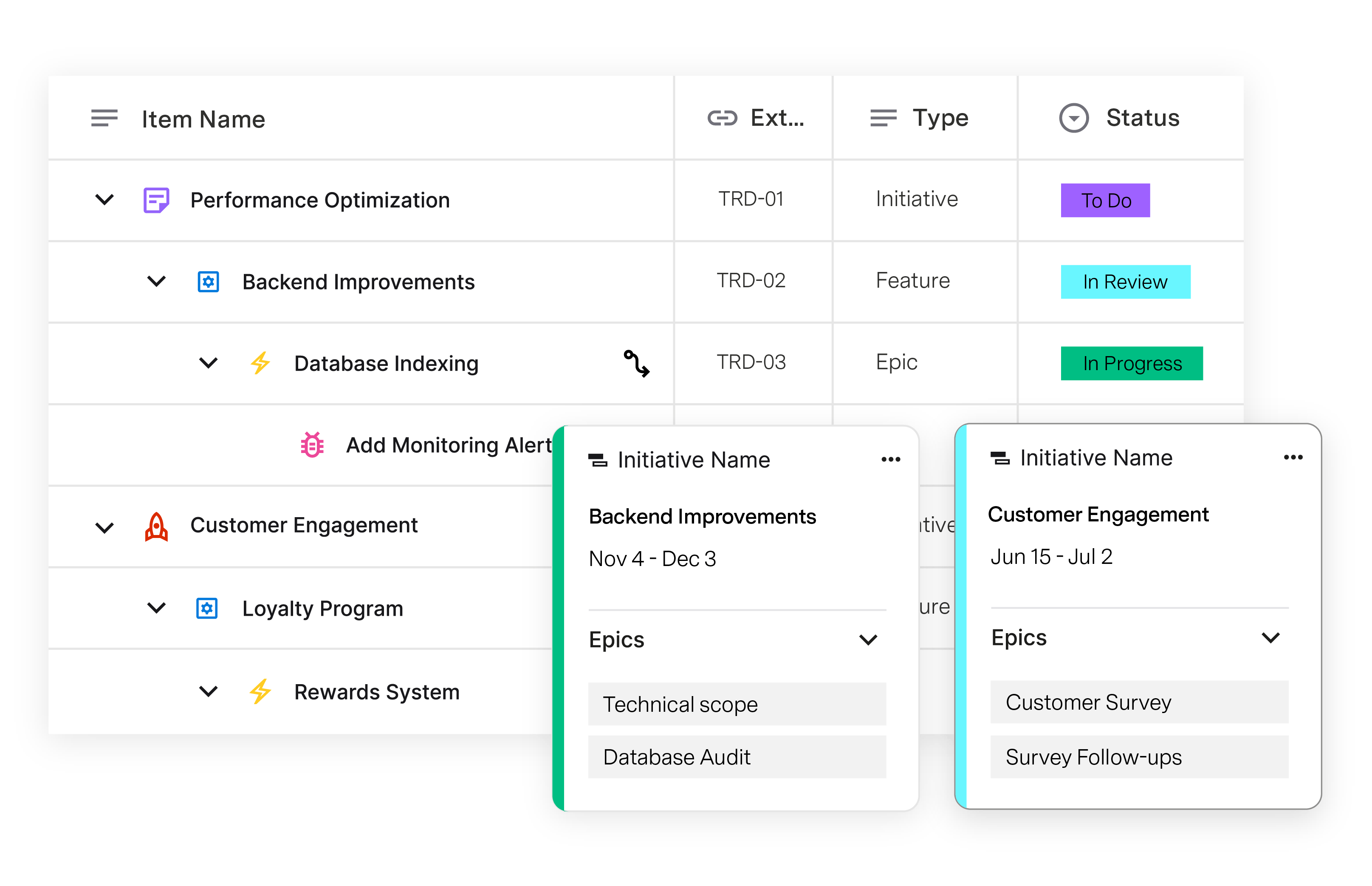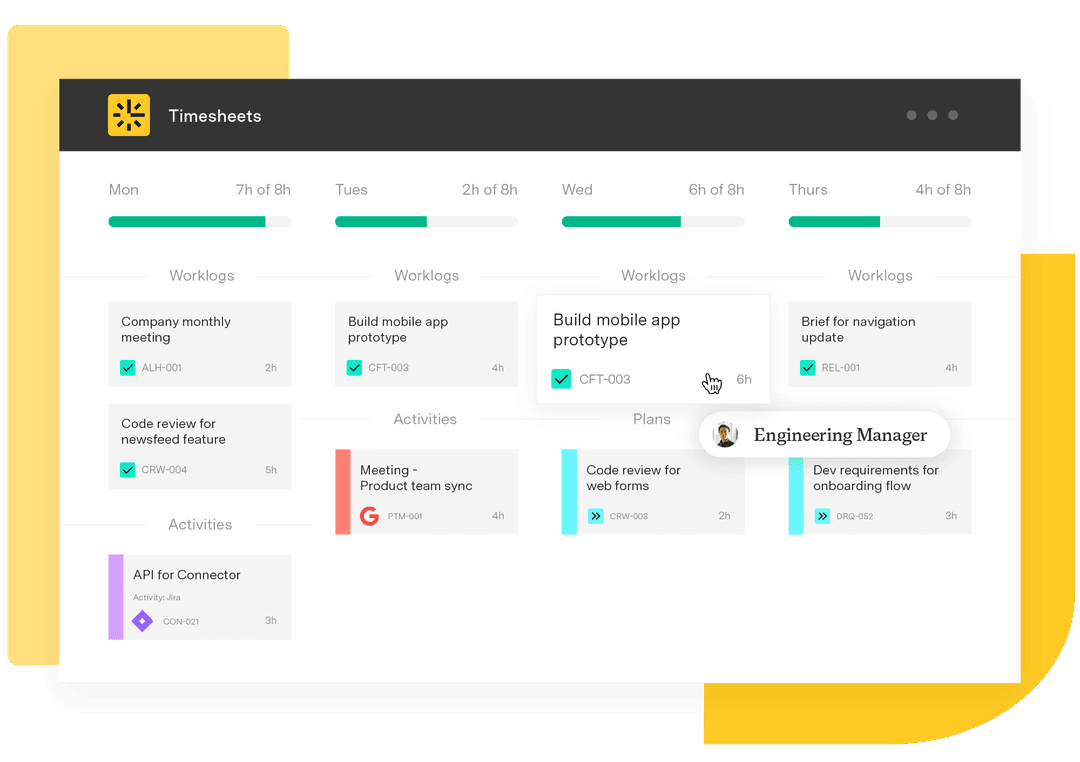Project data as a decision engine
Tempo Team
Every organization runs multiple projects competing for attention, resources, and funding. Leaders face tough choices about what to start, pause, or expand. These decisions often rely on gut instinct and experience. But project data transforms judgment into measurable impact.
When you collect data consistently across time, cost, and resources, it becomes a decision engine – a system that helps your organization adapt to change, align investments with strategy, and move toward outcomes with confidence.
Why consistency drives better decisions
Many organizations fall into a common trap. They assume data collected in different ways tells a complete story. One team tracks time in spreadsheets. Another uses a standalone tool. Some teams skip time tracking entirely.
Finance sees project costs differently than delivery teams. Resource allocation gets reported by headcount in one location and by hours in another. Without consistency, leaders compare apples to oranges.
Inconsistent data creates blind spots. Leaders make biased decisions, sink costs into failing projects, and miss opportunities. Consistency isn't about forcing every team to work the same way. It's about creating a shared language for data so the numbers are comparable across teams, projects, and ways of working.
When time, cost, and resources are measured in the same framework, we can ask important questions and trust the answers.
How data creates clarity
Picture 50 projects running across three regions. Each project uses funding, requires specialized skills, and contributes differently to your strategy. Now imagine deciding which five projects to accelerate next quarter.
Without reliable data, discussions default to politics, personal influence, or surface-level progress reports. With consistent project data, the same decision becomes data-driven.

Time data shows where effort is actually spent, not just planned. It reveals if critical work is slowed by hidden bottlenecks or spread too thin across initiatives.
"Time is the scarcest resource and unless it is managed nothing else can be managed." - Peter Drucker
Cost data uncovers whether projects deliver value proportional to investment. It shows if forecasted budgets remain realistic.
Resource data highlights whether scarce talent aligns with your highest priorities or scatters across low-impact work.
The decision about which projects to accelerate shifts from guesswork to identifying investments that are both strategically aligned and operationally feasible.
Data powers action, not just reports
Collecting data isn't the finish line – it's the fuel. Your decision engine works only if data powers conversations and actions. Leaders who embrace this mindset treat data as dynamic, not static.
Scenario planning becomes richer when grounded in actual capacity and cost data. You can ask, "What happens if we move 20% of our design resources to Product A?" and answer with evidence, not hypotheticals.

Prioritization becomes clearer when you weigh expected impact against actual effort. A project that looked promising in strategy presentations may reveal diminishing returns when viewed through time and cost metrics.
Accountability strengthens when everyone shares the same source of truth. Progress updates no longer depend on slide decks crafted for presentation but on data that reflects reality.
When organizations activate this engine, decision-making evolves from reactive to proactive. Instead of looking back at project results and wishing decisions had been different, leaders course-correct in real time.
Building the foundation
Turning project data into a decision engine requires discipline and cultural buy-in. Four pillars make this shift possible.
Shared definitions – Establish what counts as time, cost, and resource data. Does "time spent" mean hours logged or full-time equivalents? Does cost include indirect overhead? Agreeing on definitions prevents misalignment later.
Governed data collection – Give teams flexibility in how they work but embed governance that ensures data quality. This includes standardized fields, automated validation, or review checkpoints to catch errors before they spread.
Cross-team visibility – Data gains value when it's accessible across functions, not siloed in delivery, finance, or strategy.
Action-oriented culture – Data must inform decisions, not sit in reports. Leaders model data-informed decision-making, showing teams that information leads to choices, not paperwork.
The benefits of better alignment
When you use consistent project data as a decision engine, you position your organization to adapt quickly and align investments with outcomes. The benefits cascade across your work.
Leaders gain strategic clarity, cut through noise, and focus resources where they create measurable impact. Teams respond faster to change because they understand their true capacity and constraints. Investments get distributed across short-term wins, innovation bets, and long-term commitments with intentionality.
The result is confidence that the right projects are prioritized. Confidence that teams are deployed where their work matters most. Confidence that strategy isn't just a plan on paper but a living system that adapts through evidence.
“With the Project Collection, we can give project leaders the clarity they’ve been craving. They now have a structured view of project progress that enables better planning, faster delivery, and more confident decisions.” - Jaclyn Mazzarella, Global Head of Alliance at Valiantys
From strategy to outcomes
Every organization has projects. Not every organization treats project data as a decision engine. Time, cost, and resource allocation data are the headlights that cut through uncertainty.
Try the Tempo Project Collection to see how to make this a reality for your organization.













































